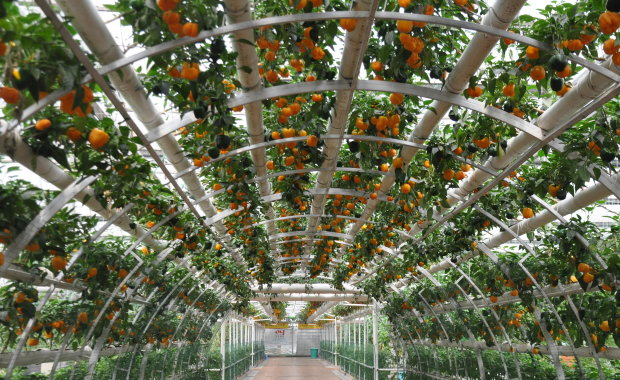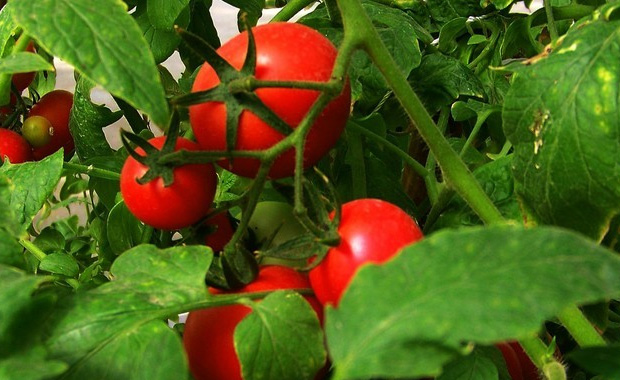We often hear the big oysters selling vegetables in the vegetable market. "This kind of dish is cultivated without soil, it is fresh and healthy." So what is the soilless cultivation in the big mouth? ? Let's take a look at soilless cultivation of tomatoes as an example.

What is soilless cultivation?
Soilless cultivation is also called nutrient solution cultivation, which means cultivation without natural soil. Soilless culture is generally carried out in a modern greenhouse. Its advanced facilities and scientific cultivation techniques are the latest achievements in modern vegetable cultivation. In the late 1970s, while introducing foreign modern greenhouse facilities, the soilless culture techniques of vegetables were introduced. Many research institutes and agricultural colleges have carried out soilless culture experiments and achieved gratifying results, but so far , still staying in the development stage, has not been widely promoted to actual production. This is mainly due to the large investment in equipment, high production costs and complicated technology.
Soilless culture can be divided into substrate cultivation and substrate-free cultivation according to whether or not the substrate is applied. For substrate-free cultivation, plant roots are directly contacted with nutrient solution (called hydroponic culture), or sprayed to spray the nutrient solution on the roots of plants (called aerobic culture), which can meet the nutritional needs and solve the oxygen supply problem. The substrate-free cultivation is less used in China's current production. The substrate cultivation uses peat, saw foam, rice husk, river sand, rock wool, perlite, snail, foam plastic and other materials as fillings, and the roots are not fixed. Soilless cultivation form of nutrient solution. Matrix cultivation has made great progress in many places.

Soilless culture is mainly carried out in modern greenhouses. In addition to greenhouse automation facilities, there are also basic facilities for nutrition management, including watertight cultivation tanks, facilities to support crop roots and management root groups, and facilities for rationally transporting nutrient solution to the roots ( Includes supplemental oxygen, filtering harmful substances, maintaining a certain temperature), other automated accessory equipment and nutrient solution formulations.
With the rapid development of the protection of China's protected areas, especially in the greenhouse, the problems of heavy crops, unreasonable fertilization, insufficient labor, large investment in facilities for soilless cultivation abroad, and expensive nutrient solution, some regions combine China's national conditions and local conditions. In terms of resources, we have developed a simple liquid supply facility and prepared a cheap and practical nutrient solution. After several years of trial and demonstration, it has been gradually promoted. Soilless culture will open up a broader prospect for the development of protected areas in China, especially in greenhouses.
How does tomato grow soilless?
Soilless cultivation of tomatoes is generally carried out in a greenhouse, and this cultivation method can be carried out all year round. The soilless culture of tomato in the greenhouse can be determined according to the performance of the greenhouse. Generally, it is mainly produced in winter, spring and early spring. The following are the specific methods of operation without soil culture:
First, nursery
The seedling tray can be used to install grass charcoal or fine slag and other substrates. It can also be filled with nutrient soil. After watering, the seeds that emanate the small buds are evenly scattered on top, covering 1 cm of the substrate or nutrient soil, and the mulch is covered with heat. % After the emergence of the seedlings, the mulch is removed, and when the seedlings grow a true leaf, the nutrient solution is started by the seeding of the substrate, and the concentration is lower, and the W-3 nutrient solution is preferably 200 to 250 times. Three leaves were transplanted into a large nutrition bag for colonization.
Second, colonization
1. Colonization of the vertical bag cultivation method
Stand-up type cultivation, generally using a 0.1 mm thick agricultural film, is made into a straight plastic bag with a height and a diameter of about 50 cm, and the bag is filled with a substrate. Before the planting, the grounding is leveled, and the bags with the substrate are placed on the cultivation bed in a row and row according to the row spacing. Two plants per bag when planting.
2. Colonization of pit-type cultivation methods
Generally, a trough cultivation bed with a height of 50 cm and a width of 50 cm is arranged by row spacing, and a film is placed on the bottom of the groove and on both sides and ends to prevent leakage, and then the substrate is loaded. The pit-growing bed can also be used without a brick, but with a trench type. Drill a trench of 30-40 cm wide and 15 cm deep from the ground vertically, and then use a film to spread into the trench, and make a 3 cm diameter hole 1 m apart for drainage. The matrix is ​​filled in the ditch, and the matrix is ​​filled into an arc shape so that the middle of the ditch is slightly higher than the ditch. A plastic drip soft belt is placed on the substrate, and a mulch film is placed on the mulch. The mulch is cultivated according to the plant spacing, and the tomato is planted in the hole. If the vertical bag cultivation or pit-type cultivation is carried out, if about 3,000 plants are planted for long-term cultivation, about 5,000 plants can be planted per acre for short-term cultivation.
Third, management after planting
Liquid supply
After the planting, the nutrient solution is supplied. The circulating liquid supply requires 200 to 250 times of the W-3 type nutrient solution per plant for 0.2 to 0.5 kg per day. Into the result period, 0.5 to 1.0 kg per plant per day. Simple soilless cultivation, artificial watering nutrient solution can be used, artificial watering should not be continuously poured nutrient solution to avoid excessive concentration. Plant growth should be observed for a nutrient solution, watering once, or reducing the concentration of nutrient solution before re-irrigating.
2. Pruning
Tomato soilless cultivation, the addition of density should be a single dry pruning method, except for the trunk, all side branches are removed. The number of spikes left can be determined according to the cultivation season. The winter and spring can leave 7 to 8 ears, and the autumn and winter can leave 3 to 4 ears. When picking the heart, leave two leaves on the inflorescence. For long-term cultivation of thin plants, continuous regeneration pruning or continuous head regenerating pruning can also be used.
Each tomato is hanged with a plastic rope and the upper end is fixed on the greenhouse skeleton. Variety selection and other cultivation management are the same as in general solar greenhouse tomato cultivation techniques. Most of the vegetables we eat now are improved varieties. Tomatoes are native to Mexico and Peru, and when they are wild, the fruit is small. Artificial planting began around 1000 AD and began as an ornamental plant. It was not until the 18th century that people began to consume tomatoes. Since then, after artificial breeding, the tomatoes have become larger and larger, the colors are diversified, red and yellow, and some smaller varieties of tomatoes have been bred, which are both delicious and fun. Let's talk about tomato soilless cultivation techniques.
New Arrivals Hair Dryers give your hair a perfect conditioning for shiny, smooth and frizz-free hair. It is specially designed to keep your hair soft as it is equipped with big wind inlet which reduces air swirl for quiet and efficient drying. It comes with overheating protection for a safe hair drying experience. Hair Dryer The compact and foldable design makes it easy for you to handle and carry wherever you want to.
New Arrivals Hair Dryers,best hair dryers,best affordable hair dryer,best hair dryer for damaged hair,best hair dryer for frizzy hair,best ionic hair dryers
Ningbo Meirou Electric Appliance Co.,Ltd. , https://www.mrhotairbrush.com